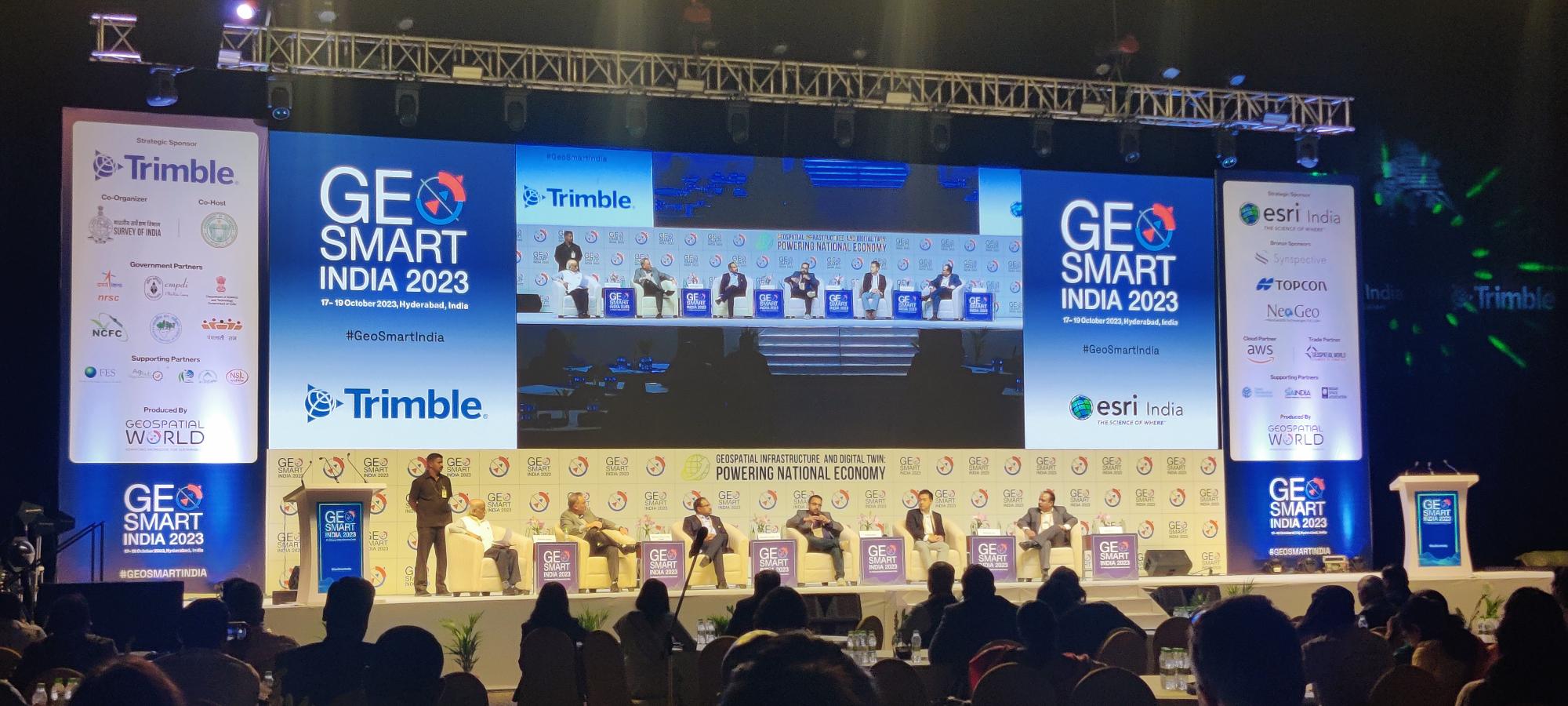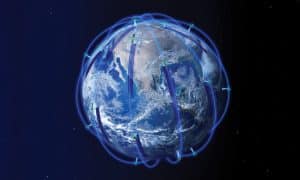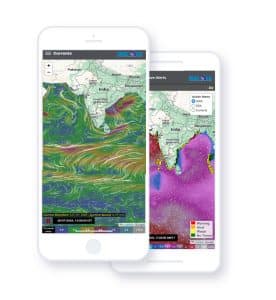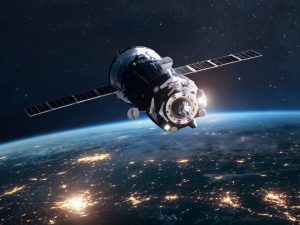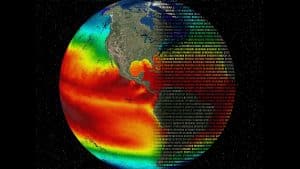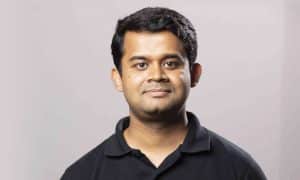Earth observations (EO) and geospatial analytics (GA) are powerful tools that can be used to enhance user adoption and industrial productivity. EO data provides us with a unique perspective on our planet, allowing us to track changes over time and identify patterns and trends. GA uses this data to create insights that can be used to make better decisions.
In the second plenary session of the GeoSmart India Conference 2023, a panel of experts discussed how EO and GA are being used to transform industries and improve lives. AS Kiran Kumar, Member Space Commission introduced the panel.
Maj Gen (Retd.) Clint Crosier, Director, AWS for Aerospace & Satellite, started the session with a keynote address on how the cloud is transforming the geospatial industry. He highlighted the rapid growth of the space industry and the increasing importance of space data in enriching life on Earth. He also discussed how AWS is working with companies like SATSURE to make inroads in agriculture and food security. He said, “Our company is training 4 million people in India in cloud computing. India will in the next 10 years will increase its space output from 2% to 8%. Space Data enriching life on Earth. Now we can identify any wildfire from space in under 3 minutes.
The space industry is rapidly growing and transforming. A new era of human spaceflight is dawning. Satellite launched into orbit will quintuple over the next decade.
Generative AI Enhancing Geospatial Solutions
Generative AI is a new technology that has the potential to revolutionize the geospatial industry. Generative AI can be used to create realistic land cover maps and 3D models of geospatial features. It can also be used to enhance satellite imagery analytics through predictive scenario generation.
Dr Mahaveer Singhvi, IFS, Joint Secretary, Ministry of External Affairs, talked about how Geospatial Data can enhance a company’s value. He said, “Geospatial Technology is also playing an important role in Sustainability and Urban Development, stopping Desertification, Mitigating Disasters etc. The development of an Ecosystem that can support Geospatial Technology is happening in India now. We all should work towards international collaboration.”
Industry academia and partnerships also should be explored. There should be a focus on strengthening the geospatial knowledge infrastructure and focus on capacity building. The NEST Division is a part of the Ministry of External Affairs which stands for New, Emerging & Strategic Technologies. The NEST Division was created to emphasize the importance of emerging technologies to India’s digital landscape, domestic industry, foreign policy, national security, and strategic interests. It is also to accelerate India’s technology intensity in new emerging and strategic technologies. Coordination of India’s position on global governance norms, standards, architecture, and rules for emerging technologies is the third facet of NEST.
Asset Management & Asset Monitoring
Earth observation (EO) is the acquisition of information about the Earth and its atmosphere from a distance, typically from aircraft and satellites. EO data should be transformed into actionable according to Sreeramam G V, CEO, NeoGeoinfo Technologies Pvt. Ltd. He said, “There are two important areas of asset management and asset condition management, which his company is focusing on right now.”
EO data can be used to monitor crop health, identify pests and diseases, and assess crop yields. This information can be used by farmers to make better decisions about irrigation, fertilization, and pest control. EO data can be used to track deforestation, identify forest fires, and monitor forest health. This information can be used by government agencies and forest management companies to protect forests and manage them sustainably.
EO data can be used to monitor the condition of bridges, roads, and other infrastructure assets. This information can be used by government agencies and infrastructure management companies to identify and repair problems before they cause disruptions to services.
Prateep Basu, CEO, Satsure, highlighted the potential of EO applications like asset monitoring in India. He said, “EO data should be made more affordable and accessible to individuals.”
EO data can be used to track and monitor natural disasters such as floods, hurricanes, and earthquakes. This information can be used by government agencies and disaster relief organizations to coordinate relief efforts and protect lives.
Motoyuki Arai, CEO, Synspective, talked about the rise of SAR satellite operators and the focus on resilient infrastructure. He emphasized the importance of bilateral partnerships in marketing and enabling new user cases.
EO and GA are powerful tools that can be used to transform industries and improve lives. By making EO data more affordable and accessible, and by investing in research and development, we can accelerate the adoption of EO and GA and reap the many benefits that they offer in India.


